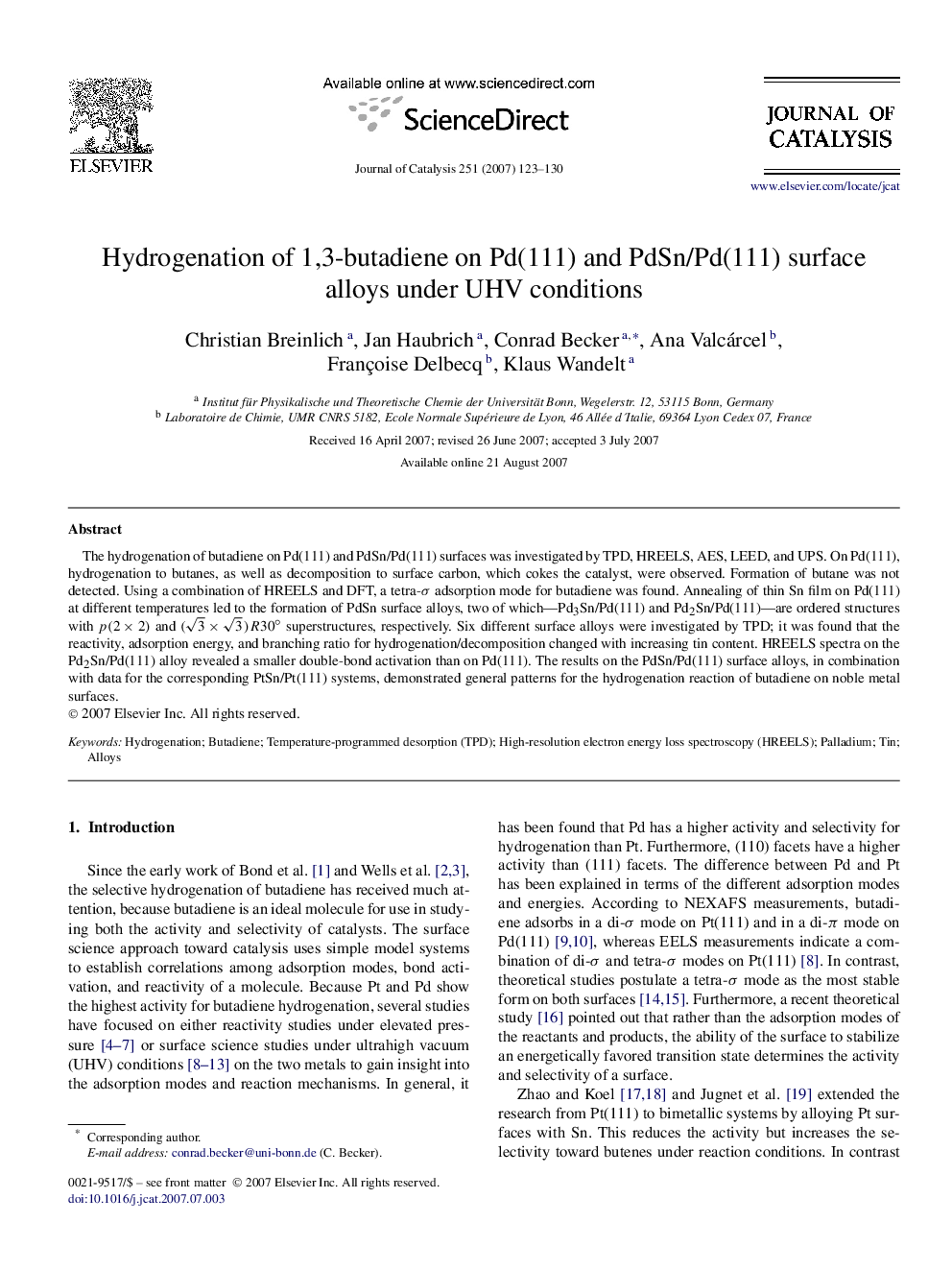| Article ID | Journal | Published Year | Pages | File Type |
|---|---|---|---|---|
| 62654 | Journal of Catalysis | 2007 | 8 Pages |
The hydrogenation of butadiene on Pd(111) and PdSn/Pd(111) surfaces was investigated by TPD, HREELS, AES, LEED, and UPS. On Pd(111), hydrogenation to butanes, as well as decomposition to surface carbon, which cokes the catalyst, were observed. Formation of butane was not detected. Using a combination of HREELS and DFT, a tetra-σ adsorption mode for butadiene was found. Annealing of thin Sn film on Pd(111) at different temperatures led to the formation of PdSn surface alloys, two of which—Pd3Sn/Pd(111) and Pd2Sn/Pd(111)—are ordered structures with p(2×2)p(2×2) and (3×3)R30° superstructures, respectively. Six different surface alloys were investigated by TPD; it was found that the reactivity, adsorption energy, and branching ratio for hydrogenation/decomposition changed with increasing tin content. HREELS spectra on the Pd2Sn/Pd(111) alloy revealed a smaller double-bond activation than on Pd(111). The results on the PdSn/Pd(111) surface alloys, in combination with data for the corresponding PtSn/Pt(111) systems, demonstrated general patterns for the hydrogenation reaction of butadiene on noble metal surfaces.
